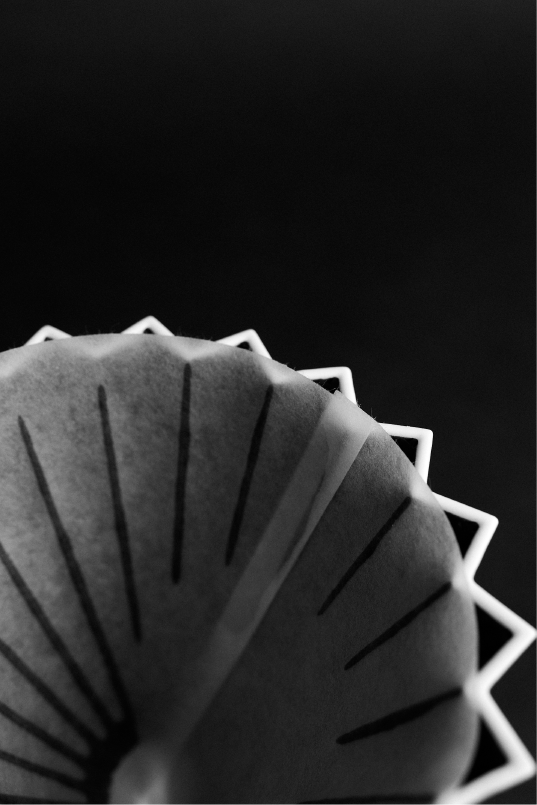
The Impact of the Contact Surface
There are various drippers available in the market, each with different designs. These designs mainly involve different grooves and shapes that provide varying filter fits and fittings. The grooves and designs modify the contact surface between the filter and the dripper. This creates different channels between them, resulting in varying extraction drawdowns and beverage filtrations (bypass).
/wp:paragraph wp:image {"id":5524,"sizeSlug":"full","linkDestination":"none"}
In general, when a dripper is combined with a filter that has a lower contact surface (meaning the filter has minimal contact with the dripper or its grooves), it leads to a faster extraction drawdown and a higher bypass effect. This allows fluid with different levels of coffee particle extraction to pass into the mug. On the other hand, a greater contact surface between the filter and the dripper slows down the extraction drawdown due to reduced air circulation and a decreased bypass effect.
/wp:paragraph wp:image {"id":5525,"sizeSlug":"full","linkDestination":"none"}
The fluid drawdown also changes based on the filter's contact surface. It becomes more sensitive to pouring and water pressure with a lower contact surface, and more consistent with a greater contact surface.
/wp:paragraph wp:paragraphIn our opinion, there is no inherently better or worse combination. Each provides different results and should be chosen based on the desired extraction outcome. Less contact can provide a fast flow and distinct results, placing more emphasis on the pouring technique and recipe. Meanwhile, greater contact can offer more well-rounded developments.
/wp:paragraph